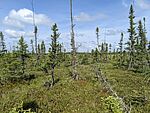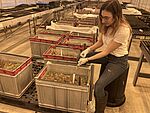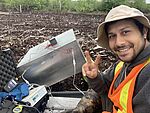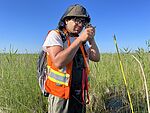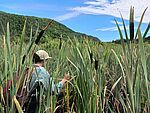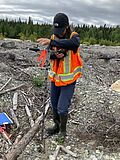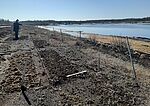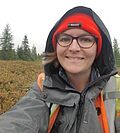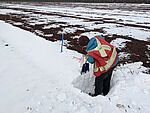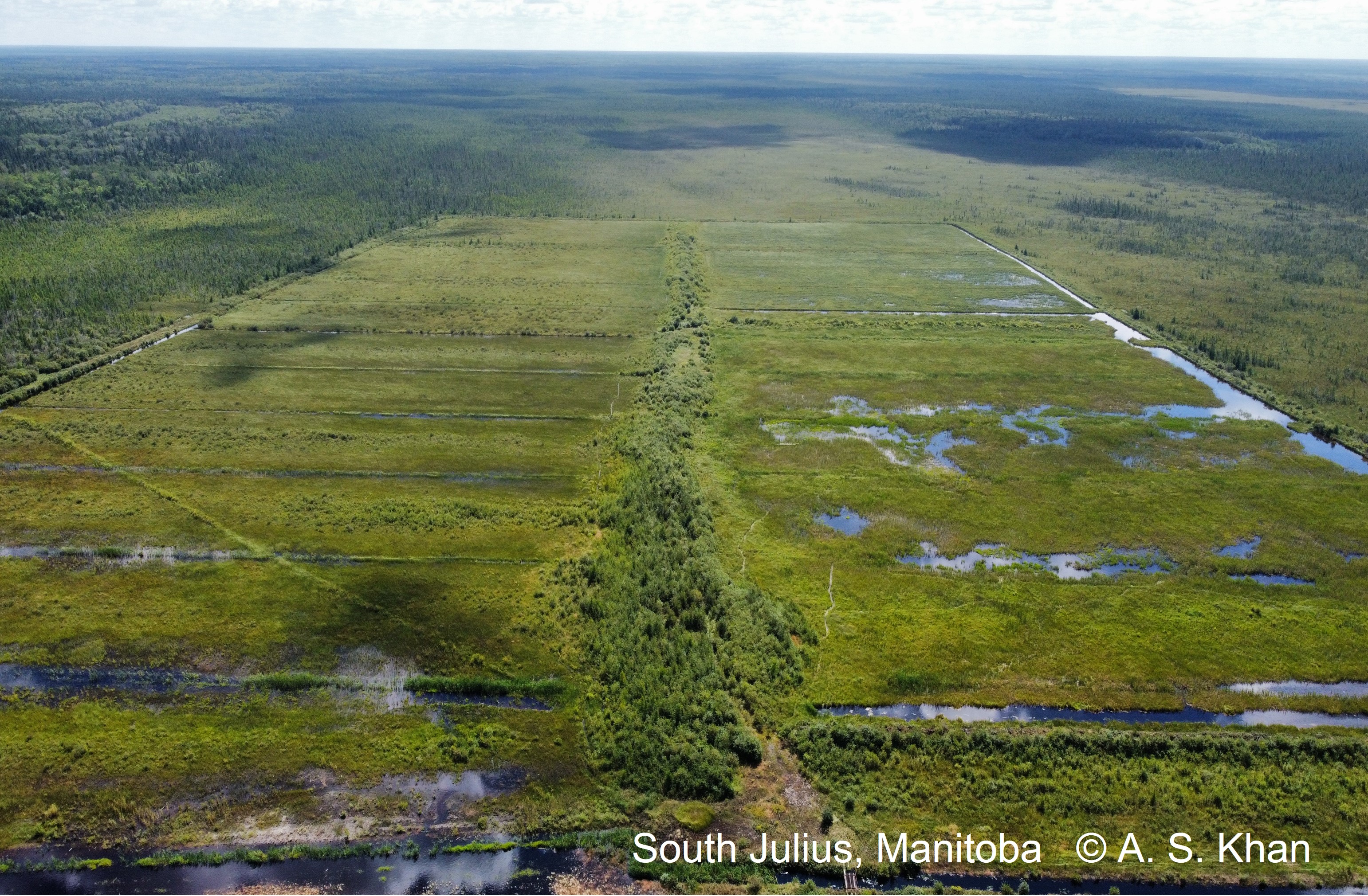In 2022, students and postdoctoral fellows of the Peatland Ecology Research Group (PERG) have conducted extensive field, greenhouse and laboratory work to collect data for their research projects. And many of them are now in the final analysis and writing of their thesis and scientific papers. Here's a quick look at some of the major projects conducted at Université Laval, Université de Moncton, University of Waterloo, Brandon University and University of Alberta over the past year.
At Université Laval, the following projects were conducted under the direction of Line Rochefort (full professor) and with the support of research professionals (Kathy Pouliot, Mélina Guêné-Nanchen and Charles Gignac) and the assistance of undergraduate research assistants (Christina Tougas, Siska Shooner, Valérie Robichaud, Catherine Viel-Lapointe, Yannika Poirier-Martin and Ralph Nourcy).
For his PhD project on the development of scientific criteria to evaluate the effectiveness of restoration actions for peatlands dominated by Sphagnum mosses (bogs), Gwendal Breton participated in his 3rd field campaign in 2022 and inventoried the vegetation of permanent plots of restored bogs in Manitoba, Saskatchewan and Alberta. He also inventoried natural peatlands as reference ecosystems. Gwendal was awarded a Mitacs Acceleration Grant with Ducks Unlimited Canada for this fieldwork.. Camille Boucher, a master's student, completed the identification of the many bryophytes and liverworts, as well as lichens, that she had collected in 2021 in Quebec and New Brunswick for her project on the return of bryophyte diversity after bog restoration using the Moss Layer Transfer Technique. |
Natural bog visited by Gwendal Breton in Manitoba |
Éléonor Bergeron-de Pani, who was a master's student in 2022, conducted an initial greenhouse experiment on enhancing the suppression of decomposition of Sphagnum mosses by testing the addition of various phenolic compounds, based on the enzymic latch concept. She then did a Mitacs Globalink internship in the fall at Bangor University (Wales, UK) in Christian Dunn's lab where she learned how to perform enzyme activity analysis on peat samples collected during the greenhouse experiment. Eleonor is now pursuing her research project as a PhD student since January 2023.
Talal Asif, a PhD student, also conducted his 3rd summer of fieldwork in 2022, in the Rivière-du-Loup region of Quebec. He collected data for the two main objectives of his Ph.D.: 1) the development of a method for short-term suppression of peat decomposition by enhancing enzymic latch and by rewetting in restored and post-extraction peatlands; 2) the optimization of Sphagnum moss farming productivity using the enzymic latch approach. |
Éléonor Bergeron-de Pani and her greenhouse experience
Talal Asif, during measurements at a post-peat extraction site |
Aamir Shehzad Khan inventoried rewetted fens in Manitoba during his 2nd summer fieldwork as a PhD student. He also returned to collect data from fens in Quebec. The goal of his project is to evaluate the recovery of plant communities in fens under different restoration actions and to evaluate the trajectory of bryophyte succession in rewetted fens in different ecoregions of Canada..
In 2022, the PhD student Laura Catalina Riaño Peña was in her 2nd field season on peatland pool biodiversity. She collected biotic and abiotic data in and around natural pools, pools created during restoration, and spontaneously created pools in Quebec and Manitoba. In 2023, she will also focus on the diversity of amphibians in peatland pools. |
Aamir S. Khan in Manitoba
Laura Catalina Riaño Peña |
Postdoctoral fellow Chao Liu worked on several projects in 2022. 1) She participated, with Camille Boucher and Mélina Guêné-Nanchen, in inventories of restored peatlands in Quebec and New Brunswick to evaluate the effect of fertilization applied during the Moss Layer Transfer Technique. 2) She has been involved in bryophyte identification and analysis of data collected over the past 25 years on Bylot Island, Nunavut, to describe the impact of Snow Geese on the coexistence of moss species in Arctic wetlands. 3) And since PERG's research does not stop at wetlands, Chao took part in the research work of Sébastien Roy's team (U. of Sherbrooke) on the study of the revegetation of a mining site (Nemaska) through the use of bryophytes.
Students Joanie Tremblay (3rPhD) and Laura Hjartarson (MSc, supervised by Juan Carlos Villarreal, Dept. of Biologie, U. Laval) are conducting their research projects on the revegetation of other disturbed mineral environments in Quebec (borrow pits in the Parc des Grands-Jardins, mining sites in Abitibi), notably through the use of biocrusts (communities of lichens, bryophytes, micro-fungi, microalgae, cyanobacteria and other bacteria that bind to soil particles to form a surface crust). Joanie is also experimenting with the Rough & Loose method, which consists of modifying the microtopography of the sites to be restored by forming a succession of hollows and bumps. This method was developed by the ecologist David Polster. |
Biocrust propagated in a greenhouse stabilizing a substrate composed of fine particles
Joanie Tremblay on a mine site in Abitibi |
At the Université de Moncton and the Valorēs Institute in New Brunswick, Marion Tétégan Simon's team continued the follow-ups and analyses of the project on the restoration of post-production peatland roads by decompaction and revegetation using tree species. A final report was produced (Tanguay, L., L. Daou & M. Tétégan Simon, 2022: available upon request). Also, Valorēs team conducted Sphagnum survival inventories at the Shippagan Sphagnum farming site in order to assess biomass production.. |
Planting trials on a restored road in New Brunswick |
At the University of Waterloo, Ontario, the PhD student Tasha-Leigh Gauthier (supervised by Jonathan S. Price and Maria Strack) continued her laboratory analysis to develop hydrological indicators to link revegetation and restoration success. In particular, her approach is based on functional traits of Sphagnum mosses. She is developing a conceptual model of the factors that determine the functional characteristics of Sphagnum mosses and their relationship to ecosystem functions (including carbon cycling). Tasha-Leigh has had laboratory assistance from two undergraduate assistants in 2022: Rayden Laliberté et Kayla Martin. On the other hand, writing is ongoing for Andrew Rutland's master's project to develop indicators of success of vegetation-related carbon sequestration after peatland restoration. |
Tasha-Leigh Gauthier |
At Brandon University, Manitoba, students Frank Yamoah and Haley Lobreau, supervised by Pete Whittington, are in the final stages of writing their master's theses on the hydrology of rewetting large fens. |
At the University of Alberta in Edmonton, Mika Little-Devito, a master's student supervised by William Shotyk and Kevin Devito, also continued the analysis of samples and data collected the previous year, allowing her to assess the impact of peat extraction operations on water quality. Data were collected in New Brunswick and Alberta at sites before and during peat extraction and at sites restored with the Moss Layer Transfer Technique. |
Mika Little-Devito preparing to collect data before the snow melts in Alberta |
